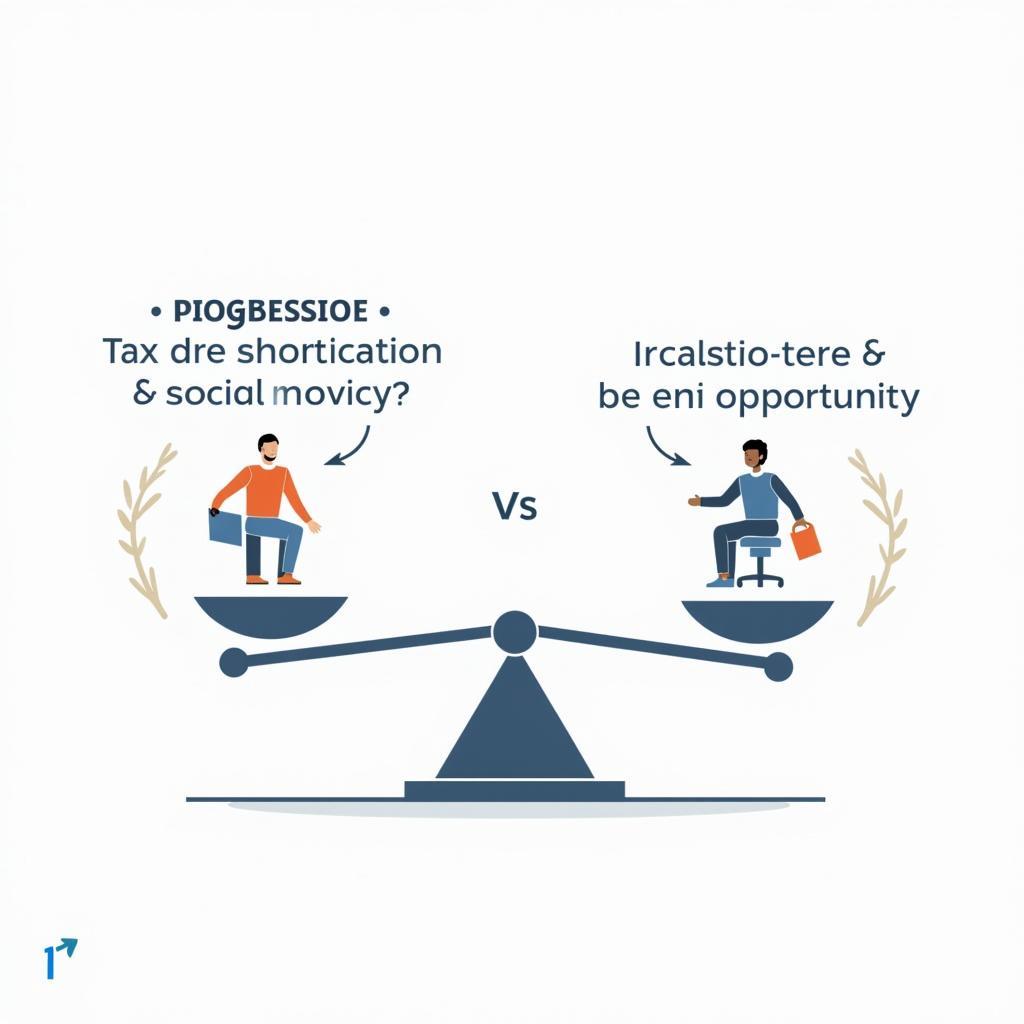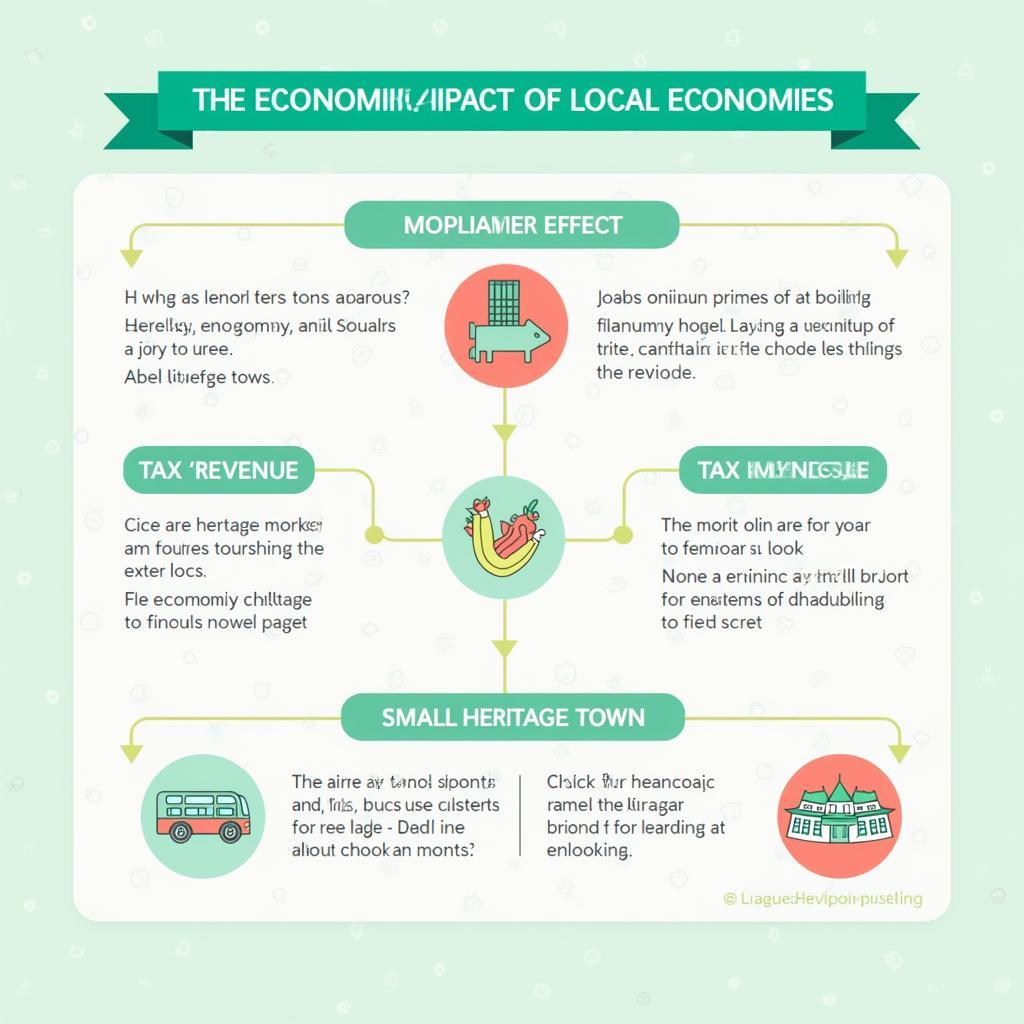Mức độ bất bình đẳng thu nhập và cách xử lý bằng thuế lũy tiến (progressive taxation) là một chủ đề xuất hiện thường xuyên trong IELTS Writing Task 2 vì gắn liền với tư duy chính sách công, công bằng xã hội và tính bền vững kinh tế. Trong bài viết này, bạn sẽ học được: cách phân tích đề “Discuss both views/Opinion” xoay quanh chủ đề How To Address Income Inequality Through Progressive Taxation, 3 bài mẫu ở ba mức Band 5-6, 6.5-7 và 8-9 kèm phân tích chấm điểm chi tiết, từ vựng học thuật và cấu trúc câu ăn điểm, cùng checklist tự đánh giá giúp bạn viết chắc tay trong 40 phút.
Nội dung bài viết
- 1. Đề Writing Part 2
- 2. Bài mẫu Band 8-9
- Phân tích Band điểm
- Các yếu tố giúp bài này được chấm điểm cao
- 3. Bài mẫu Band 6.5-7
- Phân tích Band điểm
- So sánh với bài Band 8-9
- 4. Bài mẫu Band 5-6
- Phân tích Band điểm
- Những lỗi sai của bài – phân tích & giải thích
- Cách Cải Thiện Từ Band 6 Lên Band 7
- 5. Từ vựng quan trọng cần nhớ
- 6. Cấu trúc câu dễ ăn điểm cao
- 7. Checklist Tự Đánh Giá
- Kết bài
Một số đề thi/thực tế được báo cáo nhiều trên các nguồn học liệu uy tín (IELTS Liz, IELTS-Blog, British Council/IDP sample bank; câu chữ có thể khác nhau giữa các phiên bản):
- The gap between the rich and the poor is widening. What problems does this cause, and what can be done to address this situation?
- Some people believe that governments should not allow salaries above a certain level, while others think people should be free to earn as much as they can. Discuss both views and give your own opinion.
- Raising taxes on the wealthy is considered the best way to reduce income inequality, while others argue alternative measures are more effective. Discuss both views and give your opinion.
Bài viết dưới đây chọn một đề “Discuss both views” gần gũi, cập nhật, và bám sát ý định tìm kiếm liên quan đến How to address income inequality through progressive taxation để bạn thực hành tối đa.
1. Đề Writing Part 2
Some people argue that the most effective way to reduce income inequality is to adopt progressive taxation, while others say that non-tax measures such as education, wage policies, and social transfers matter more. Discuss both views and give your own opinion.
Dịch đề: Một số người cho rằng cách hiệu quả nhất để giảm bất bình đẳng thu nhập là áp dụng thuế lũy tiến, trong khi người khác nói rằng các biện pháp không liên quan đến thuế như giáo dục, chính sách tiền lương và trợ cấp xã hội mới quan trọng hơn. Hãy thảo luận cả hai quan điểm và nêu ý kiến của bạn.
Phân tích đề bài:
- Dạng câu hỏi: Discuss both views + opinion. Bạn phải:
- Trình bày khách quan hai quan điểm.
- Đưa ra và bảo vệ quan điểm cá nhân nhất quán.
- Thuật ngữ:
- Progressive taxation: thuế lũy tiến (thu nhập càng cao, thuế suất cận biên càng cao).
- Non-tax measures: biện pháp phi thuế (giáo dục, lương tối thiểu, phúc lợi).
- Social transfers: chuyển giao xã hội (trợ cấp, phúc lợi mục tiêu).
- Lỗi thường gặp:
- Chỉ nói về thuế tiêu thụ (VAT) thay vì thuế thu nhập lũy tiến.
- Thiếu cân bằng giữa hai quan điểm; không có ví dụ hoặc bằng chứng suy luận.
- Lạc đề sang “giới hạn lương CEO” mà không liên hệ với bất bình đẳng.
- Sai mạo từ và giới từ trong các cụm policy, tax rate, impact on.
- Cách tiếp cận chiến lược:
- Dành mỗi thân đoạn cho một quan điểm; dùng ví dụ hoặc logic chính sách rõ ràng.
- Kết nối với tiêu chí “hiệu quả nhất”: hiệu quả ngắn hạn (tái phân phối) vs dài hạn (cơ hội).
- Kết luận đưa ra lập trường ưu tiên pha trộn chính sách (policy mix).
 Chiến lược viết IELTS Task 2 về How to address income inequality qua progressive taxation
Chiến lược viết IELTS Task 2 về How to address income inequality qua progressive taxation
2. Bài mẫu Band 8-9
Bài Band 8-9 cần lập luận sắc sảo, cân bằng, ví dụ/logic thuyết phục, từ vựng học thuật chính xác, mạch lạc cao.
Essay (290–310 words):
While taxation is not a silver bullet, advocates of progressive tax systems contend that steeper marginal rates can swiftly compress after‑tax disparities. By design, such systems raise more revenue from those with the greatest ability to pay, enabling governments to expand targeted transfers and public services without imposing undue burdens on low earners. In addition, progressive taxes can temper excessive executive pay by modestly lowering the net rewards to rent‑seeking. If paired with robust enforcement to curb avoidance, this approach delivers an immediate redistribution effect and funds the very institutions that underpin social mobility.
Opponents, however, argue that non‑tax levers do the heavy lifting in the long run. Improving early‑years education, widening access to higher education, and modernising vocational training attack inequality at its roots by enhancing productivity and employability. Likewise, fair wage policies—such as calibrated minimum wages and stronger collective bargaining—lift the earnings floor, while means‑tested benefits cushion households during shocks. Crucially, these measures can reduce pre‑tax inequality, limiting the need for aggressive redistribution ex post and avoiding potential disincentives associated with very high marginal rates.
In my view, framing the debate as tax versus non‑tax is a false dichotomy. A coherent policy mix is superior: moderately progressive income taxes and inheritance taxes can stabilise the post‑tax distribution, while revenues should be ring‑fenced for high‑quality education, preventative healthcare, and active labour‑market programmes. To safeguard efficiency, thresholds and rates ought to be calibrated against administrative capacity and behavioural responses, and anti‑avoidance rules must be watertight. Meanwhile, wage‑setting institutions deserve continuous upgrades to reflect evolving labour markets.
Ultimately, progressive taxation is an essential instrument to finance opportunity and insure society against shocks, but it works best when embedded in a broader architecture of opportunity. Governments should therefore pursue mutually reinforcing reforms rather than elevating one tool at the expense of all others.
Phân tích Band điểm
| Tiêu chí | Band | Nhận xét |
|---|---|---|
| Task Response (Hoàn thành yêu cầu) | 8.5 | Trả lời đủ hai quan điểm, có lập trường rõ ràng, lý lẽ sâu và nhất quán. Đưa ra giải pháp “policy mix” và giải thích tại sao hiệu quả. Không lạc đề, ví dụ logic. |
| Coherence & Cohesion (Mạch lạc & Liên kết) | 8.5 | Mở–thân–kết rõ ràng; mỗi đoạn đảm nhiệm một chức năng riêng. Dùng từ nối học thuật hợp lý; tham chiếu “this approach/these measures” mượt. Không lạm dụng liên từ. |
| Lexical Resource (Từ vựng) | 8.5 | Từ vựng học thuật đa dạng: marginal rates, rent‑seeking, ring‑fenced, ex post. Collocations chuẩn. Dùng từ chính xác, không lặp quá nhiều. |
| Grammatical Range & Accuracy (Ngữ pháp) | 8 | Câu phức, mệnh đề quan hệ, cụm phân từ, đảo ngữ nhẹ. Ít hoặc không có lỗi. Dấu câu, song song ngữ pháp chuẩn. |
Các yếu tố giúp bài này được chấm điểm cao
- Định nghĩa ngắn gọn nhưng chuẩn về progressive taxation và tác động “after-tax disparities”.
- So sánh “pre-tax vs post-tax inequality” cho thấy tư duy chính sách sâu.
- Lập luận hiệu quả ngắn hạn (redistribution) vs dài hạn (opportunity) rất mạch lạc.
- Đưa ra tiêu chí thiết kế: thresholds, behavioural responses, enforcement.
- Sử dụng collocations học thuật chính xác: policy mix, ring-fenced revenue, active labour‑market programmes.
- Kết luận tránh cực đoan: tích hợp giải pháp, không “thuế vs không thuế”.
- Liên kết ý chặt chẽ bằng tham chiếu và paraphrase thay vì lặp từ.
 Bài mẫu Band 8-9 IELTS Task 2 về progressive taxation và bất bình đẳng thu nhập
Bài mẫu Band 8-9 IELTS Task 2 về progressive taxation và bất bình đẳng thu nhập
3. Bài mẫu Band 6.5-7
Đặc điểm: Lập luận rõ, ví dụ đủ dùng, từ vựng học thuật vừa phải, có thể còn lặp từ/ý; ngữ pháp đa dạng ở mức trung cấp cao, lỗi nhỏ không làm hiểu sai.
Essay (255–275 words):
Many people believe progressive taxation is the fastest way to narrow the gap between rich and poor. It collects more money from high earners and allows governments to support low-income families through benefits and better public services. When the tax authority also improves enforcement, it can reduce avoidance and make the system fairer. In this sense, taxation directly changes the after-tax income distribution and can show results within a few budget cycles.
However, other measures are vital if we want sustainable equality. Education reforms, from early childhood to vocational training, help people gain skills that raise their wages. Wage policies, such as a prudent minimum wage and support for collective bargaining, can also increase earnings at the bottom. Additionally, targeted social transfers protect vulnerable households during unemployment or illness. These policies reduce inequality before taxes are even applied, which may decrease the need for very high tax rates that could discourage effort or investment if set poorly.
In my opinion, we should not choose between taxes and non-tax tools. A balanced approach is better: keep a reasonably progressive income tax and tax inheritance fairly, but invest the revenue in schools, healthcare, and job-matching services. Meanwhile, the government should simplify rules to cut compliance costs and keep incentives for work and innovation. If these elements are coordinated, society can both fund redistribution and expand opportunity, which is the most reliable way to deal with income inequality.
Phân tích Band điểm
| Tiêu chí | Band | Nhận xét |
|---|---|---|
| Task Response (Hoàn thành yêu cầu) | 7 | Trả lời đủ hai phía, có quan điểm rõ, có đề xuất kết hợp. Thiếu chiều sâu so với Band 8-9 (ít tiêu chí thiết kế/điều kiện). |
| Coherence & Cohesion (Mạch lạc & Liên kết) | 7 | Bố cục hợp lý, dùng từ nối quen thuộc. Một vài chỗ lặp cấu trúc; chuyển đoạn mượt nhưng chưa tinh tế như bài 8-9. |
| Lexical Resource (Từ vựng) | 7 | Từ vựng phù hợp, có collocations cơ bản: minimum wage, targeted transfers. Một số diễn đạt còn chung chung. |
| Grammatical Range & Accuracy (Ngữ pháp) | 6.5 | Có câu phức và mệnh đề quan hệ; một vài cấu trúc an toàn. Lỗi nhỏ về song song/đặt mệnh đề chưa ảnh hưởng nghĩa. |
So sánh với bài Band 8-9
- Chiều sâu lý thuyết: Bài 8-9 nêu pre-tax vs post-tax rõ, có “behavioural responses, ring‑fenced revenue”. Bài 7 nêu khái quát hơn.
- Từ vựng: Bài 8-9 dùng nhiều cụm học thuật chuẩn xác; bài 7 dùng từ phổ thông hơn.
- Mạch lạc: Bài 8-9 có luận điểm then chốt “false dichotomy” và kiến trúc chính sách; bài 7 thiên về “balanced approach” nhưng chưa mở tiêu chí thiết kế cụ thể.
4. Bài mẫu Band 5-6
Đặc điểm: Có ý chính nhưng phát triển ý còn mỏng, ví dụ hạn chế, từ vựng lặp, lỗi ngữ pháp/mạo từ/giới từ xuất hiện; vẫn đủ độ dài và có bố cục cơ bản.
Essay (250–265 words):
Some people say progressive tax is the best solution for inequality, because rich people pay more and poor people pay less. This idea seems fair and can reduce the rich-poor gap in a short time. Government can use the money for welfare and education. However, if the rate is too high, many rich will move to other country or find ways to avoid tax, so the plan may not work well.
Other people believe that education and wage policy are more important. When students receive better education and training, they will get better jobs and higher salary. Also, minimum wage can push companies to pay more money for low workers. Social benefits also help people who are in difficult situation. These ways can improve equality from the beginning, not only after tax.
In my opinion, progressive tax should be used, but we should not depend only on it. The government need to combine tax with education reform and health care, and make sure companies follow the law. If the rules are clear and simple, people will accept tax easier and the system will be more effective and efficiency. Therefore, using both tax and other policies is the best way to reduce inequality in many countries today.
Phân tích Band điểm
| Tiêu chí | Band | Nhận xét |
|---|---|---|
| Task Response (Hoàn thành yêu cầu) | 6 | Trả lời đủ hai phía và có ý kiến; phát triển còn nông, ví dụ chung chung. |
| Coherence & Cohesion (Mạch lạc & Liên kết) | 6 | Bố cục rõ 3 đoạn; liên kết ý đơn giản, lặp từ; một số chuyển ý đột ngột. |
| Lexical Resource (Từ vựng) | 5.5 | Lặp từ “tax, equality, money”; vài collocations sai hoặc không tự nhiên. Thiếu từ học thuật chính xác. |
| Grammatical Range & Accuracy (Ngữ pháp) | 5.5 | Lỗi mạo từ, số ít/số nhiều, giới từ, collocation; cấu trúc câu đơn chiếm đa số. |
Những lỗi sai của bài – phân tích & giải thích
| Lỗi sai | Loại lỗi | Sửa lại | Giải thích |
|---|---|---|---|
| many rich will move to other country | Mạo từ/số nhiều | many rich people will move to other countries | Thiếu danh từ “people”; country số nhiều; thiếu mạo từ không cần thiết vì dùng số nhiều. |
| more money for low workers | Collocation | higher wages for low-paid workers | Dùng “wages/salaries” thay “money”; “low-paid workers” là cụm đúng. |
| Government can use the money | Mạo từ | The government can use the money | Cần “the” khi nói về chính phủ cụ thể của một quốc gia. |
| higher salary | Số ít/số nhiều | higher salaries | “People… they” cần danh từ số nhiều khi nói chung. |
| in difficult situation | Mạo từ | in a difficult situation | Cần mạo từ “a” cho danh từ đếm được số ít. |
| effective and efficiency | Từ loại | effective and efficient | Cần hai tính từ song song. “Efficiency” là danh từ. |
Cách Cải Thiện Từ Band 6 Lên Band 7
- Thêm chiều sâu: nêu “pre-tax vs post-tax inequality”, “enforcement/avoidance”.
- Nâng cấp collocations: higher wages, enforce compliance, behavioural responses.
- Đa dạng câu: thêm mệnh đề quan hệ, cụm phân từ, câu chẻ.
- Kiểm soát lỗi cơ bản: mạo từ a/the, số nhiều, giới từ (move to other countries, invest in education).
- Đưa ví dụ/logic cụ thể thay vì chung chung, ví dụ “ring-fence revenue for vocational training”.
 Lộ trình cải thiện bài viết IELTS Task 2 từ Band 6 lên Band 7
Lộ trình cải thiện bài viết IELTS Task 2 từ Band 6 lên Band 7
5. Từ vựng quan trọng cần nhớ
| Từ/Cụm từ | Loại từ | Phiên âm | Nghĩa tiếng Việt | Ví dụ (tiếng Anh) | Collocations |
|---|---|---|---|---|---|
| progressive taxation | n. | prəˈɡresɪv tækˈseɪʃn | thuế lũy tiến | Progressive taxation can compress after-tax disparities. | progressive tax system; progressive rates |
| income inequality | n. | ˈɪnkʌm ˌɪnɪˈkwɒləti | bất bình đẳng thu nhập | Income inequality has widened in many economies. | reduce/entrench inequality |
| marginal tax rate | n. | ˈmɑːdʒɪnəl tæks reɪt | thuế suất cận biên | Very high marginal tax rates may affect incentives. | raise/lower marginal rates |
| redistribution | n. | ˌriːdɪstrɪˈbjuːʃn | tái phân phối | Tax-and-transfer systems enable redistribution. | income redistribution; redistributive effect |
| tax avoidance | n. | tæks əˈvɔɪdəns | tránh thuế (hợp pháp) | Strong enforcement curbs tax avoidance. | curb/prevent/engage in avoidance |
| tax base | n. | tæks beɪs | cơ sở thuế | Broadening the tax base raises revenue. | broaden/narrow the tax base |
| means-tested benefits | n. | ˈmiːnz ˌtestɪd ˈbenɪfɪts | trợ cấp theo điều kiện | Means-tested benefits protect the vulnerable. | provide/expand means-tested benefits |
| social mobility | n. | ˈsəʊʃl məʊˈbɪləti | dịch chuyển xã hội | Education investment fosters social mobility. | foster/undermine social mobility |
| Gini coefficient | n. | ˈdʒiːni ˌkəʊɪˈfɪʃnt | hệ số Gini | The Gini coefficient measures inequality. | high/low Gini coefficient |
| after-tax income | n. | ˈɑːftə tæks ˈɪnkʌm | thu nhập sau thuế | Policies affect after-tax income distribution. | redistribute after-tax income |
| ring-fence | v. | rɪŋ fens | “đánh dấu” riêng ngân sách | Governments can ring-fence funds for schools. | ring-fence revenue/funding |
| wage floor | n. | weɪdʒ flɔː | sàn lương | A prudent wage floor can reduce poverty. | raise/set a wage floor |
| narrow the gap | v. | ˈnærəʊ ðə ɡæp | thu hẹp khoảng cách | Targeted transfers narrow the gap quickly. | narrow/widen the gap |
| by the same token | connector | — | tương tự, cùng lý lẽ | By the same token, wage policies matter. | — |
| in the final analysis | connector | — | sau cùng | In the final analysis, a policy mix works best. | — |
6. Cấu trúc câu dễ ăn điểm cao
- Câu phức với mệnh đề phụ thuộc
- Công thức: Mệnh đề chính + when/if/although/because + mệnh đề phụ.
- Ví dụ từ bài 8-9: If paired with robust enforcement to curb avoidance, this approach delivers an immediate redistribution effect.
- Vì sao ghi điểm: Diễn đạt điều kiện/nhượng bộ rõ ràng, logic cao.
- Ví dụ bổ sung:
- Although rates increase, compliance can remain stable.
- Because revenues are ring-fenced, outcomes are measurable.
- Lỗi thường gặp: Dùng “because of + mệnh đề” sai; đúng: because + clause / because of + noun.
- Mệnh đề quan hệ không xác định (non-defining relative clause)
- Công thức: Danh từ, which/who + mệnh đề phụ, mệnh đề chính.
- Ví dụ: revenues should be ring‑fenced for high‑quality education, which enhances social mobility.
- Ghi điểm: Bổ sung thông tin mượt mà, tăng tính học thuật.
- Ví dụ:
- Minimum wages, which set a wage floor, can reduce in-work poverty.
- Vocational training, which is often underfunded, deserves attention.
- Lỗi: Bỏ dấu phẩy; dùng “that” thay “which” trong mệnh đề không xác định.
- Cụm phân từ (participle phrases)
- Công thức: V-ing/V-ed + cụm bổ nghĩa, mệnh đề chính.
- Ví dụ: Improving early‑years education, governments attack inequality at its roots.
- Ghi điểm: Nén thông tin, tạo nhịp viết tự nhiên.
- Ví dụ:
- Calibrated carefully, marginal rates avoid distortions.
- Designed poorly, policies backfire.
- Lỗi: Treo chủ ngữ (dangling modifier); đảm bảo chủ ngữ của cụm và mệnh đề chính trùng nhau.
- Câu chẻ (Cleft sentences)
- Công thức: It is/was + thành phần nhấn mạnh + that + mệnh đề.
- Ví dụ: It is a coherent policy mix that delivers durable equality.
- Ghi điểm: Nhấn mạnh luận điểm, thay đổi nhịp câu.
- Ví dụ:
- It is enforcement that determines real-world outcomes.
- It was targeted support that lifted families out of poverty.
- Lỗi: Lạm dụng gây rối mạch; chọn điểm nhấn thật sự cần làm nổi.
- Câu điều kiện nâng cao (Type 2/3, mixed)
- Công thức: If + S + V2, S + would/could + V; If + had V3, S + would have + V3.
- Ví dụ: If thresholds and rates were calibrated poorly, disincentives could emerge.
- Ghi điểm: Giả định chính sách, đánh giá kịch bản.
- Ví dụ:
- If enforcement had been stronger, avoidance would have fallen.
- If revenues were wasted, trust would erode.
- Lỗi: Sai thì; quên dùng “had + V3” ở điều kiện loại 3.
- Đảo ngữ (Inversion for emphasis)
- Công thức: Only by/rarely/seldom/never + trợ động từ + S + V.
- Ví dụ: Only when taxes fund opportunity do they reduce inequality sustainably.
- Ghi điểm: Tăng nhấn mạnh, linh hoạt cao cấp.
- Ví dụ:
- Seldom do very high rates work without strong enforcement.
- Not until revenues are ring-fenced is impact visible.
- Lỗi: Quên đảo trợ động từ; dùng sai thì sau đảo ngữ.
7. Checklist Tự Đánh Giá
- Trước khi viết:
- Xác định dạng đề: Discuss both views + opinion.
- Gạch 3-4 ý chính cho mỗi phía; chọn lập trường rõ.
- Quyết định ví dụ/logic: pre-tax vs post-tax, enforcement, wage floor.
- Trong khi viết:
- Viết mở bài ngắn, nêu bối cảnh + yêu cầu.
- Mỗi thân đoạn 2–3 luận điểm có ví dụ/giải thích.
- Dùng liên từ vừa đủ; paraphrase để tránh lặp.
- Sau khi viết:
- Soát mạo từ a/the, số nhiều, giới từ (invest in, impact on, burden on).
- Kiểm tra chủ vị, song song ngữ pháp, dấu phẩy mệnh đề quan hệ.
- Cắt câu thừa; đảm bảo 260–320 từ cho an toàn.
- Mẹo quản lý thời gian:
- 5 phút phân tích và dàn ý.
- 25–28 phút viết thân bài.
- 5–7 phút soát lỗi và chỉnh từ vựng/cấu trúc.
Kết bài
Trong IELTS Writing Task 2, chủ đề How to address income inequality through progressive taxation đòi hỏi bạn nhìn nhận vấn đề qua hai lăng kính: tái phân phối sau thuế và tạo cơ hội trước thuế. Bài viết mạnh cần: nắm chắc khái niệm progressive taxation, phân biệt pre-tax vs post-tax inequality, và đề xuất một policy mix hợp lý. Luyện tập theo ba bài mẫu Band 5-6, 6.5-7, 8-9 ở trên, kết hợp vốn từ học thuật và 6 cấu trúc câu chủ lực, bạn có thể tiến bộ rõ rệt chỉ trong 3–6 tuần nếu viết đều 2–3 bài/tuần.
Hãy viết một bài theo đề đã chọn, áp dụng checklist và đăng dưới phần bình luận để nhận góp ý từ cộng đồng. Tham khảo thêm các chủ đề liên quan tại [internal_link: chủ đề]. Với phương pháp đúng, bạn sẽ tăng độ chắc tay, cải thiện mạch lạc và nâng band điểm bền vững, không chỉ cho chủ đề bất bình đẳng thu nhập mà cho mọi đề Task 2 khác.


